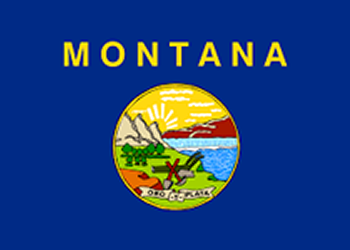Could Have Been Worse, 2021 Looks Promising
As bad as it was, the experience of other states shows that it could have been much worse for Montana.
While the economic restraints that were imposed because of COVID-19 has had a profound impact on the economies of Montana and the nation, “the surprise is that Montana’s job setback, while severe, has been milder than all but a handful of predominantly Mountain West states,” reports Patrick Barkey, Director of the Bureau of Business Research (BBER) at UM, which hosted a review of the state’s economy in a virtual program on Feb 1 and 2.
“To say that this has been a surprise is an understatement,” said Barkey. “The closure of the international border, the huge declines in air travel and the turbulence in oil market seemed to be formidable headwinds for many of our key industries. Yet the opportunities that the COVID-19 pandemic has presented Montana businesses, which are too numerous to list, have helped fill at least part of the hole,” Barkey wrote in the Montana Business Quarterly, published by BBER.
Usually each year the BBER conducts a tour of the state’s major cities presenting half-day seminars that provide a broad range of information about the state’s economy. This year, because of COVID restraints, the format changed to a two-day “zoom” conference, featuring a broad range of speakers.
In general, the state’s leading economists predict that Montana will, economically speaking, rise above the obstacles that the virus has thrown at us, but things will be different and there remains a lot of uncertainty.
“The state economy enters the new year with both momentum and uncertainty,” said Barkey. Predictions are difficult because “…the connection between economic growth and public health is not that simple anymore.”
Recessions of the past predominantly hit one market segment over others, but the COVID recession “left no corner of the state’s cities and regions untouched,” according to Barkey, “…it has unfolded in a way that bears little resemblance to previous economic downturns.”
Montana’s economic performance in 2020 “will undoubtedly go down as the worst in its post-war history.”
“Over the first two quarters of last year, Montana suffered a 8.2% payroll job decline, amounting to almost 39,000 jobs. The job losses were disproportionately felt in two industries – accommodations and food (28.1% decline), and arts and entertainment (27.3%) – that were most challenged by physical distancing. With the exception of government, however, no industries were spared. Health care’s job declines were especially surprising, given that the downturn was produced by a health crisis.”
With our focus on the number of jobs lost, there has been less awareness that wages in Montana did not decline in the same manner. On average income levels were minimally impacted. The reason: jobs lost tended to be lower paying jobs, and in many cases Montanans who retained their jobs were called upon to work more hours.
Much of the data relating to the status of the state’s economy is still coming in, making projections for 2021 difficult.
While the BBER’s forecast for 2020 was a growth rate of 2.3 percent for Montana, the reality is it may have declined to -2.1 percent. Not all the Montana data is in, but when it is “the growth rate for 2020 is estimated to be worse than the Great Recession of 2008-09.”
Nationally, COVID uncertainties make for greater unpredictability, but a decline in COVID concerns and greater confidence, “could make actual growth surpass the projections.” Posing as a concern is the long-term impact on business of the “aggressive” actions of government.
The US economy will move slowly into 2021, accelerating as the year progresses. Growth next year is projected to be 4.2 percent “significantly above the long-term trend.”
Barkey predicted that investors in the national economy will focus more on segments of the economy connected to government, such as environmental and social issues. Banks, globally, will face greater risks, prices are likely to rise on finished goods and stabilize for services, which were pushed down by depressed demand.


0 comments